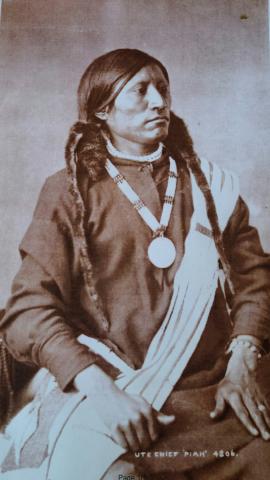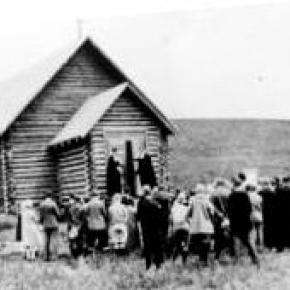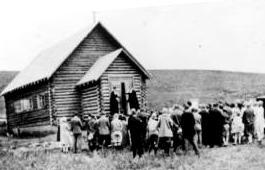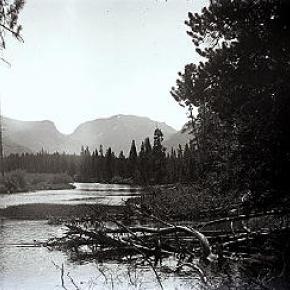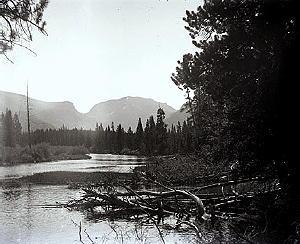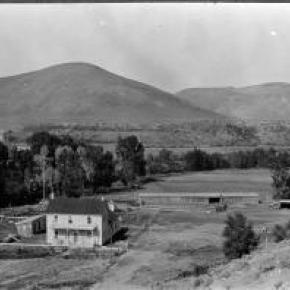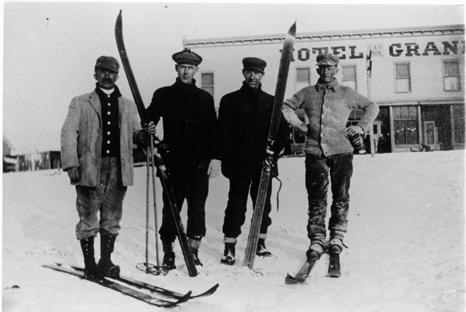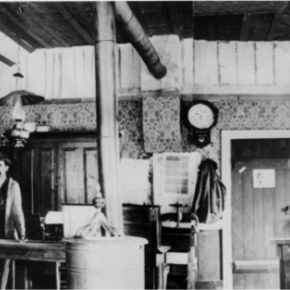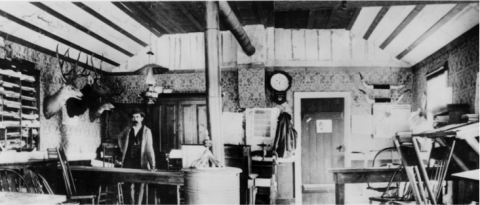People Articles
| Inell Harvey |
Inell Harvey
Born in 1916 in Springfield, Mo., and raised in Kansas, Inell came to Colorado to study at the Greeley State Teachers College, which later became the University of Northern Colorado. At the age of 22, she taught eight grades in Pratt, KS, in a one-room school to which she rode a horse every day and where stoked a potbelly stove for heat. Later, she taught on a Ute Indian reservation in Ignacio before going on to teach drama for several years. Harvey died on June 4, 2008 at the age of 92, after a car accident on the Trough road west of Kremmling. |
||||
| Isabella Bird |
Isabella Bird

In Yorkshire, England on October 15th 1831, a clergyman and the daughter of a clergyman gave birth to small, sickly girl who would grow up to be one of the most well known travel writers of her time, an exceptional accomplishment in an era when women rarely ventured far from home unescorted. In 1850, after a childhood full of ailments, Isabella had an only partially successful operation to remove a tumor from her spine. Following the surgery, Isabella suffered greatly from depression and insomnia; it was then that her doctor recommended that she travel. Isabella's father, becoming increasingly worried about his daughter, gave her a hundred pounds and sent her off to see the world. Ms. Bird traveled throughout the world including Canada, Hawaii, Australia, China, Tibet and Morocco. She came to Colorado right after the territory had officially been become a state. Isabella loved it in the mountains, so much so that she wrote many letters home to her sister which eventually came to become her third and most famous book, A Lady's Life in the Rocky Mountains. In this document, Isabella wrote of her adoration of the area saying, "I have found a dream of beauty at which one might look all one's life and sigh." Upon her arrival to Colorado, she traveled into the mountains west of Estes Park. She wrote about adventures and challenges and of her romance with Jim Nugent, or "Rocky Mountain Jim" a one eyed outlaw with an attraction to violence and poetry. He was shot and killed a year after Isabella left Colorado. Isabella grew eventually grew homesick and headed back to Edinburgh Scotland where she married a doctor. After five years of marriage, her husband died and Isabella returned to travelling. When Isabella returned to Edinburgh in 1904, she grew very ill and died while planning another trip to China. |
||||
| Jacob Pettingell - An interview from 1931 |
Jacob Pettingell - An interview from 1931

Transcribed by Dan Nolan In 1880, Jacob Pettingell moved to Grand County at the age of 20. He spent the rest of his life here serving as postmaster, notary public, insurance agent, abstracter, legal counsel, justice of the peace and county clerk. The following is part of an interview conducted by his son-in-law Victor Frey in 1931. Company of soldiers Fish & game Town of Kremmling Williams Fork Town of Grand Lake Sandy Campbell and Jim Bowen were the first prospectors. The price of silver was high, and most of these mines were for silver. These mining towns sprang up around 1880-81. I originally came west to spend about three months in Middle Park, hunting and fishing, but when the mining boom struck this locality, I became interested. I grubstaked two men; later I took up a claim above the old Wolverine mine for silver and mined for 7 or 8 years. It was a paying proposition while silver was up in price but on account of the long freight haul and drop in price, the mine was later abandoned. Estimated population during boom days: Gaskill 150; Lulu 200; Teller City from 1,200 to 1,500. It was claimed that Teller City had 27 saloons. My personal recollections are that they might have had as many as 20 at one time. The Famous Foot Race The Mock Trial They held open court and the house was packed, not only with local people, but about 20 tourists were present. The defense attorney spent much of his time describing the wonderful scenery around Grand Lake and Colorado in general. The prosecuting attorney prosecuted hard and produced a witness who claimed he actually recognized the accused man and stated there was no doubt but what he was the guilty party. About the time the jury was to have the case, it was framed that I should commence a heated argument across the room with Gil Martin. When I jumped up and called Martin a liar, he opened fire with blank cartridges across the room: I commenced returning the fire. There was a great commotion, people actually jumping out thru the windows and a wild scramble thru the doors. The frightened defendant escaped into the timber. It rained all that afternoon. We later succeeded in convincing his partner that it was a joke, so he finally brought the defendant in that night, dripping wet and still badly frightened. They all pulled out of Grand Lake before morning. First Courthouse The Duel The commissioners met at Grand Lake on July 3, 1883; they all agreed to adjourn until July 4 because Mills had an important case in court that day. Mills went to court but Day and Webber went to the Nickerson House and held a commissioners meeting there. At this meeting they raised the amount of bonds for county officers, making same so high they knew none could comply. As I recall, the sheriff’s bond was around $50,000. This caused the sheriff and under-sheriff to throw in with Mills. The next day was Fourth of July and many people were shooting out into the lake, there being considerable noise. Cap Dean, Barney Day and Webber left the Young Hotel (where I was also stopping) and started down town. No one knew just what did happen or who fired the first shot. There were some extra shots in that direction: someone thought they saw a man fall to the ground; we all ran down to the spot which was about 500 yards from the Young Hotel. Mills was lying in the road; Barney Day part way in the water; both Dean and Webber had been carried into the hotel. Day and Mills died instantly, while Webber lived until around 2 A.M. the next morning. I sat by his bedside. Cap Dean lived 4 or 5 days although he was shot to pieces. I sat beside Dean’s bed and asked him who did the shooting and he replied that he did not care to say. Later, he described one tall man with a handkerchief over his face who attacked him and it fit the description of Bill Redman. It was thought that Mills opened up the attack by firing his rifle. The sheriff and undersheriff both escaped. They first came to Sulphur and tried to organize a posse but the people seemed to mistrust them and they left the country. Later, Chas. Royer, the sheriff, committed suicide. Bill Redman had been a great pal of Royer’s and when he picked up a paper reading about Royer, he also committed suicide. Therefore, this cost the lives of 6 men. Firsts in Grand County: The First Newspaper The First Auto The First Train The Grand Hotel Conclusion
|
||||
| Jim Bridger |
Jim Bridger

Jim Bridger spent quite a bit of time in Grand County and has been cited as "one of the three or four most able, influential, and best known mountain men' according to historian Dan Thrapp. Born in Virginia in 1804, he was apprenticed to a blacksmith in St Louis at the age of fourteen, and in 1822, left to join Ashley's fur trading operation in the Yellowstone area of Wyoming. He claimed to have discovered the Great Salt Lake in 1824, believing it to be an arm of the Pacific Ocean. He was a co-founder of the Rocky Mountain Fur Company, along with Tom Fitzpatrick and Milton Sublette. While Bridger was illiterate, he was noted for both his intimate knowledge of the Rocky Mountains and his prevarications to impress newcomers. He was engaged in some battles with Indians, but was married to two Indian women; a Ute woman who died in childbirth, and then Shoshone women who bore him two children. Jim's friendship with Louis Vasquez led to construction of a fort named Fort. Bridger on the Green River in Wyoming. As a guide, he led the infamous expedition of Sir George Gore through Grand County in 1855, in which Gore killed many thousands of animals and birds. During the excursion, he would join Gore for luxurious dinners with fine table service and discussions of Shakespeare. Bridger hired a teenaged boy to read him some of Shakespeare's plays but thought that many of the story lines were just "too vicious or ridiculous". He was one of the most sought after guides of the West during his lifetime and guided American troops in the so called Mormon War of 1857-8. In his later years, Bridger acquired a farm near Westport Missouri, gradually became blind and died in 1873. His two sons buried him in the present Kansas City, but in 1904, his remains were moved to Mountain Washington Cemetery in Independence Missouri. Jim Bridger is immortalized with his name being given to many places in the West. |
||||
| John & Ida and the Sheriff Ranch |
John & Ida and the Sheriff Ranch

Sheriff Ranch lies in a valley just below Highway 40, 2 miles east of the Town of Hot Sulphur Springs. It's the serene world of John & Ida Sheriff. Old cabins with outhouses align themselves against the riverbank of the Colorado River. They tell a story of the fishermen who once rented the cabins for just a dollar a day-a long time ago. It's a quiet Sunday morning and only the sound of geese flying overhead can be heard. The cattle are quiet in the meadow as the sun begins to rise and feeding time comes close. They sense the presence of this stranger. The air is cool and damp as Ida comes to greet me. John is not far behind. Looking across the meadow, a calf seems to have caught herself in a fence and to my surprise, the entire herd rushed off to help her. Suddenly she's free and the cattle slow to a stop. The cows quiet down as John throws hay from the pickup. The calves are more curious and come right up to us. One mother cow took off with her young one and Ida called her by name, "Oh, Spook, why are you running off?-she's always taking off! She's afraid you're here to brand her!" John & Ida begin this morning just as they have for the past 57 years, checking on momma cows ready to give birth and carefully watching the newborn calves. They all have a name, just like children. Two calves, not quite awake, lie together on the hay while chewing on the tender hay. The sound of the cows chewing is soothing to the ear. A story of the ranch heritage unfolds while we sit at the kitchen table enjoying a cup of tea and fresh baked date-nut bread. Marietta Sumner Sheriff and her sons came to Leadville, Colorado from a farm in Keithsburg, Illinois, in search of mining claims recorded by her deceased husband, Matthew. (Many farmers and ranchers moved to Colorado ? the promise land of gold). Some years later, Marietta and her sons moved to Hot Sulphur Springs where her sister, Mrs. William Byers lived (1859 Rocky Mountain News founder, William F. Byers). The ranch has been passed down from generation to generation since then. John Sheriff was the eldest son of Glenn and Adaline Sheriff (Glenn Sheriff was County Commissioner for 21 years, County Assessor, Director of the State Welfare Board for 13 years, and President of the Board of the Middle Park Union High School). He attended the Hot Sulphur Springs Public School through the 12 th grade. Everyone had to share in working the ranch and John was no stranger to peddling milk door to door for 10 cents a quart before he went to school. Harsh winters closed off travel over Corona Pass (Top of the World) and the only way into the County was on snowshoes. Middle Park was a tough place to live with 50 degrees below freezing for weeks on end. Many people stocked up on flour and sugar and other supplies for the winter because they couldn't get into town for supplies. The Sheriffs were more fortunate and would use a horse and sled and follow the river into the town of Hot Sulphur for supplies. Ranch life was not a wealthy profession as many may have thought. The Sheriffs know how hard it was to keep the family ranch. In the 1930's, Roosevelt's New Deal (Agriculture Adjustment Administration-AAA) forced ranchers and farmers to kill off half of their herd to level out the economy. Cow hides were sold for 5 cents a hide. Ida recalls, "Everyone in agriculture had to start over. Everyone was in the same boat. Some people couldn't take the stress and just moved off their ranches-- just leaving them!" The Sheriff ranch was in debt following the depression era. Ranches were up for foreclosure everywhere; banks didn't want them. The family just hung in there until they could get a herd of cattle going again. Joining the Navy, John served in the South Pacific during World War II, and returned home to attend Colorado State University where he studied general agriculture. He met and married Ida Marte in 1949, daughter to early Grand County pioneers, Liberat and Bertha Marte. Ida is known over the years for her involvement with historical societies, documenting the history of the County, and maintaining original cemetery plots for the Hot Sulphur Springs Cemetery. The years after the war were a struggle. With not enough hay to put up and only a handful of cattle, ranchers turned to raising sheep and harvesting crops of lettuce. Japanese prisoners of war were sent here from California to work on ranches. "We always had to have an outside income ?cabin rentals, John's dad, Glenn was commissioner, and Mom worked at the library to help pay expenses. Once in a while we would have enough cows or lambs to go to market. The Federal Land Bank saved a lot of ranches allowing us to borrow money to get going. We were all afraid of another recession after the war," Ida said. In the first 30 years of their marriage, John & Ida did not see much of each other. John traveled back and forth taking cattle to auction. When they got married, the ranch was so much in debt that they were "darn lucky that we didn't loose it". The Sheriff homestead was registered in 1881 with 1350 acres and had as many as 250 head of high grade Herefords by 1975. Pure-bred bulls were purchased from neighboring ranches (Taussig Brothers, Hermosa Ranch, and Lawson Ranch) improving the quality of the herd. Sheriff ranch's registered brand-Bar Double S---is still known to be the oldest registered brand in the County. In 1984 a large portion of ranch acreage was sold to Chimney Rock Ranch Company and the remaining acreage is where Ida and John live today, raising a small herd of cattle. They no longer make trips to auction. Today, a buyer comes to the ranch. With no electricity in the early years, trudging through deep snow to the barn's generator was a morning ritual to power the lights in the house. In later years, electricity allowed the Sheriffs to start the generator with a flick of the switch from within the main residence. The years of struggle and hardship, hard work and the desire to keep the family ranch has been a great sense of pride for the Sheriff family today. John and Ida, their ancestors and their family are a living example of family ranches surviving today. Not many remain, but this ranch, with a great family history, has a river of life flowing through it. |
||||
| John Charles Fremont |
John Charles Fremont
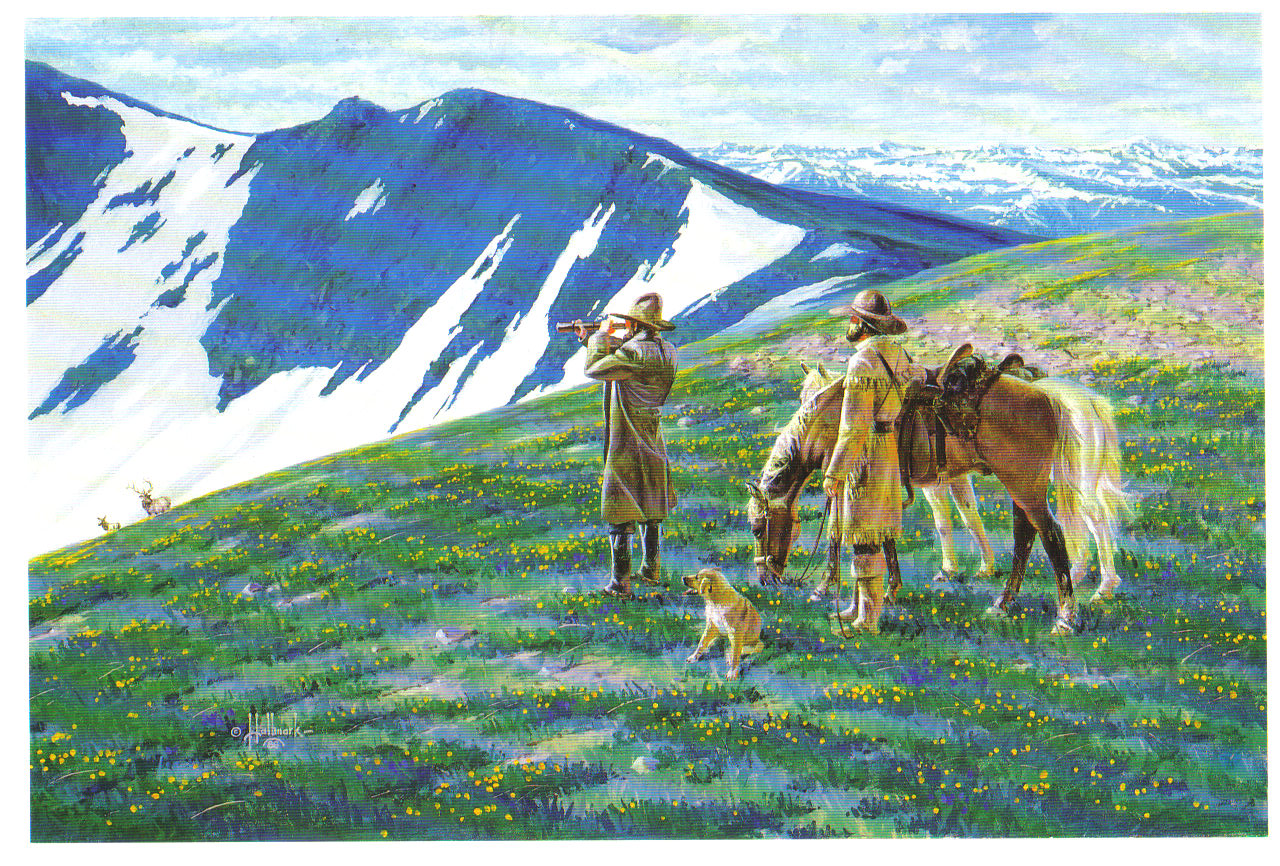
Captain John Charles Fremont was born in 1813 and at the age of 31, in June 1844, was exploring the northern reaches of the Republic of Texas when he passed through Grand County. This marked the first appearance of official government enterprise in Grand County. His expedition included some 40 explorers, including people of Creole, French, and Black descent. The guides were Thomas Fitzpatrick and Kit Carson. This expedition entered Grand County via Muddy Pass and exited via the Blue River, never traveling into the eastern part of the County. They met with some 200 Arapahoe Indians, who were traditionally suspicious of the intruders, but through the giving of trade gifts, overt conflicts were avoided. The cartographer for that expedition was Charles Preuss, who provided the first map on which all of the central Rocky Mountain Parks were named and mapped accurately. |
||||
| John Peyer - Winter Carnival Founder |
John Peyer - Winter Carnival Founder
John Peyer was born in Zurich Switzerland on March 26, 1880 and emigrated to the United States in 1902, settling in Ionia (Jewell County) Kansas. John eventually found his way to Hot Sulphur Springs on June 1, 1911 as the sales manager of the Hot Sulphur Springs Townsite Company. John drove a luxury 7-passenger Martini automobile, which was used for transporting prospective land buyers from the Moffat Railroad train depot. In October of 1911, the Moffat Railroad announced that freight operations would be moved from Hot Sulphur Springs to Fraser. The Middle Park Times published an editorial concerned about the future of Hot Sulphur Springs. John Peyer responded with a letter that suggested that the town could be a winter sports tourist attraction. One week later John ran a notice in the paper for all interested parties to meet to plan a winter carnival. John Peyer was elected Carnival Committee Chairman and the Carnival Day was set for December 30, 1911. A Denver Post article the day before the carnival quoted “Hot Sulphur Springs Winter Sports Club hopes to make winter sports as popular in Colorado as they are in Switzerland and Norway”. The carnival had a great turnout and John Peyer showed he also had athletic skill, placing first in the Fancy Skating Contest and first in the Couples Fancy Skating Contest, along with Mrs. Fuller. At 9pm at the highlight of the Grand Ball, two strangers appeared on skies, with 35 pound backpacks and rifles. Carl Howelsen and Angell Schmidt, who had heard about the carnival, boarded the train in Denver at 8 am and detrained at the Corona Station atop of Rollins Pass to ski down the mountains. They completed this feat of 44 miles on skis in 9 hours. The Norwegians set out the next day to build a crude ski jump and by shortly after noon, they gave a jumping exhibition that amazed the spectators. John Peyer and the Winter Carnival committee were inspired to plan yet another event in six weeks time to include the spectacular ski jumping. The second carnival was planned for February 10-12, 1912. John Peyer headed up the planning for the Second Annual Winter Carnival and attracted skiers and athletes from all over including the National Ski Association’s professional circuit. The Middle Park Times had ads for the upcoming 2nd Annual Winter Sports Carnival on January 31, February 1 & 2, 1913. Skis for sale $2.50 and up. See John Peyer. Mr. John Peyer has received a consignment of skis from a ski factory in Ashland, Wisconsin and is selling them for Mr. C. Howelsen, our professional ski jumper. If you don’t believe that Hot Sulphur Springs is the best place in the world for ski jumping, just ask John Peyer. He knows. The January 19th 1913 Denver Post, published a half page with photos and headlined “Skijoring, with Horses Hitched to Men on Skis to be seen at Sulphur Springs Winter Carnival.” “Novel Sport will be Witnessed in U.S. for First Time”. The article explained skijoring. The January 31st 1913 Rocky Mountain News headline was, “Ski Jumpers Are Ready For Great Midwinter Sport Carnival”. “Crack Flyers East and West will meet in Program of Daring Feats”. Five photos appeared with two ski jumpers, persons on a sled, and a toboggan. In the center photo was John Peyer and a lady demonstrating skijoring with the caption, “Never before in America, so far as we can learn, has skijoring been attempted”. The second carnival made history by being recorded in moving pictures which were shown across America. John Peyer pursued his real estate career with the Hot Sulphur Springs Company and in July 1913 became Automobile Park Superintendent for the Lincoln Highway Association. The association was in charge of "The Main Street Across America Campaign". John later made a living by repairing cars and went on to be a travelling salesman for the Hupp Motor Car Company. Around 1920, John Peyer settled in Brooklyn New York where he married and fathered two children. He continued to visit his bungalow in Hot Sulphur Springs. John became the proprietor of a hotel in DeSoto City Florida and then moved on to Sebring Florida where he opened a machine shop business. At the outbreak of World War II, John Peyer helped organize and became an instructor at the Sebring Defense School at Hendricks Airfield. John Peyer passed away on November 5, 1941 at age 61 years. He was survived by his wife Elsa, daughter Helen and son Herbert. His obituary said that he was considered to be one of the ablest machinists and manufacturers machinists in the nation. |
||||
| John Wesley Powell |
John Wesley Powell

John Wesley Powell was a Civil War veteran who had lost part of one arm as a result of combat. He was a professor of natural history at Illinois Wesleyan Collage, who took field trips with his students to the Rockies. He came to the Grand County region looking for a vantage point to conduct an exploration of the Colorado (the Grand) River. With six local men he made the first recorded ascent of Long's Peak, the 14,255 foot landmark of the Front Range, on August 23, 1868. From that summit he could view much of the headwaters area of the river. Descending back into Middle Park, he ventured to Gore Canyon where he decided the turbulent rapids were too dangerous for his boats. He decided to take an exploratory party of students to the Green River in Wyoming, a tributary of the Colorado. Losing one boat in that expedition, the party made the first known trip through the Grand Canyon in 1869. He later became leader of the first U.S. Geological Survey, and because of his study of Indian tribes, the first head of the U.S. Bureau of Ethnology. |
||||
| Joseph Wescott |
Joseph Wescott

Joseph Wescott was born in 1838 in Nova Scotia and reared in Iowa. By 1865, he was in Middle Park, squatting, half-blind and semi-alcoholic, in Hot Sulphur Springs with his friend Charlie Utter. Having come to Colorado to get relief from rheumatism, he passed his time in creative writing, fishing, drinking, and shooting his revolver. In 1868, after being induced to sell all of his claims of 160 acres around the hot springs, he left Hot Sulphur Springs to go to Grand Lake. In 1870, a group of Arapahoe Indians arrived in the area and there is an unverified report that Wescott, Jack Sumner, and three fishermen killed “not less than five” of the Indians. Soon after this incident, Wescott settled into developing a rustic resort with cabins, rafts, canoes, and skiffs on Grand Lake. By 1879, he had three buildings on the West Shore. In July 1880, disaster struck when Edward Phillips Weber, an attorney, took over Wescott’s original filing as his own. Weber claimed that there were “flaws in the filing” and forced Wescott out. Nevertheless, on June 26, 1888, Wescott filed a plat for “Grand Lake City,” on the lake shore south from the inlet. He designed the area for summer visitors rather than as a residential community. Wescott later wrote a famous poem about the legend of Grand Lake, and how the spirits of the lost Ute women and children can still be heard wailing on foggy mornings at the lake shore. |
||||
| Lewis D.C. Gaskill |
Lewis D.C. Gaskill

Lewis DeWitt Clinton Gaskill came to Colorado as a polished young mining promoter from upstate New York, where he was born in 1840. He married Miss Nellie C. Rogers in 1865, and raised three daughters born to the marriage. By 1874 he partnered with William Cushman to build the Georgetown, Empire and Middle Park Wagon Road, which opened in November of that year, to the great surprise of locals and professionals alike. He and his family lived at the summit of Berthoud Pass into the mid-1880s, when they built the Gaskill House in what became Fraser, CO. For a short time he was employed as mine foreman at the Wolverine Mine in Bowen Gulch, outside of Grand Lake. One of the mining camps, in fact, came to be known as Gaskill. Over the years there was significant competition between the different camps, and mercantiles associated with them. Gaskill's was one of the biggest and best. Gaskill, the camp, survived for about six years, before falling victim to the end of the mining boom. In 1896, a county-wide passion for William Jennings Bryan and his Democratic-Populist party, helped to seat Gaskill as democratic chairman of the Board of County Commissioners for Grand County. By 1903, Gaskill came into conflict with D.H. Moffat and the Denver, Northwestern, and Pacific Railway, over property and right-of-way purchases. He, along with Nathan S. Hurd, ended up settling their dispute over property values in County Court. In 1904, upon the death of Fraser postmaster, William Z. Cozens, the Fraser post office was moved to the Gaskill House in Fraser, and L.D.C. Gaskill was appointed postmaster. Soon after, the townsite was platted and development undertaken under the name of Eastom, but that name was soon forgotten and the area continued to be known as Fraser. "[Gaskill] was one of those quiet, easy-tempered, efficient persons who can always be depended upon.'" Captain Gaskill (his rank came from service in the Civil War) became "a major Grand County personality." |
- ‹ previous
- 3 of 7
- next ›










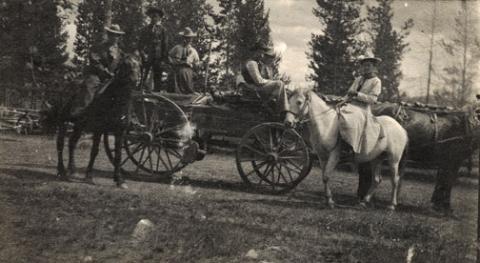
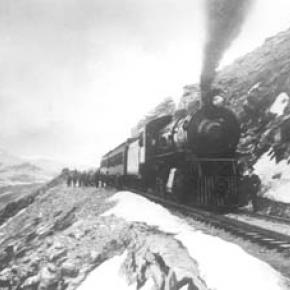

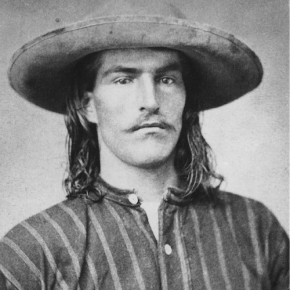
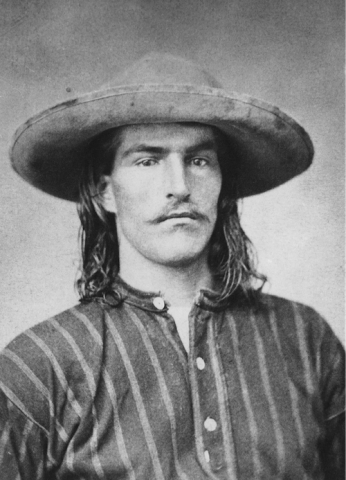
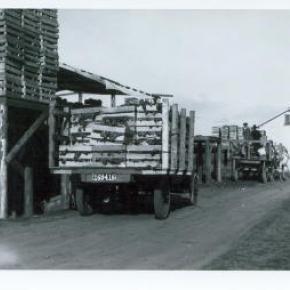
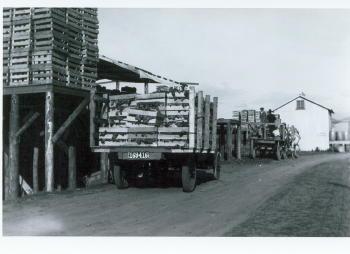
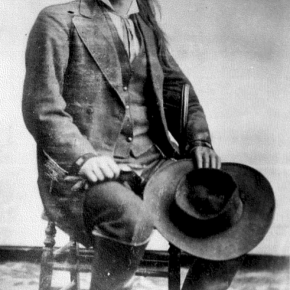
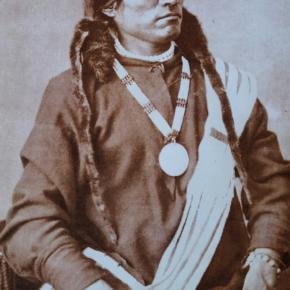
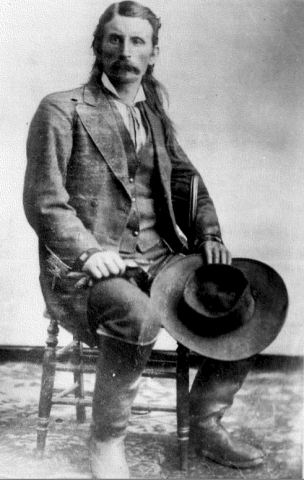 ,
, 